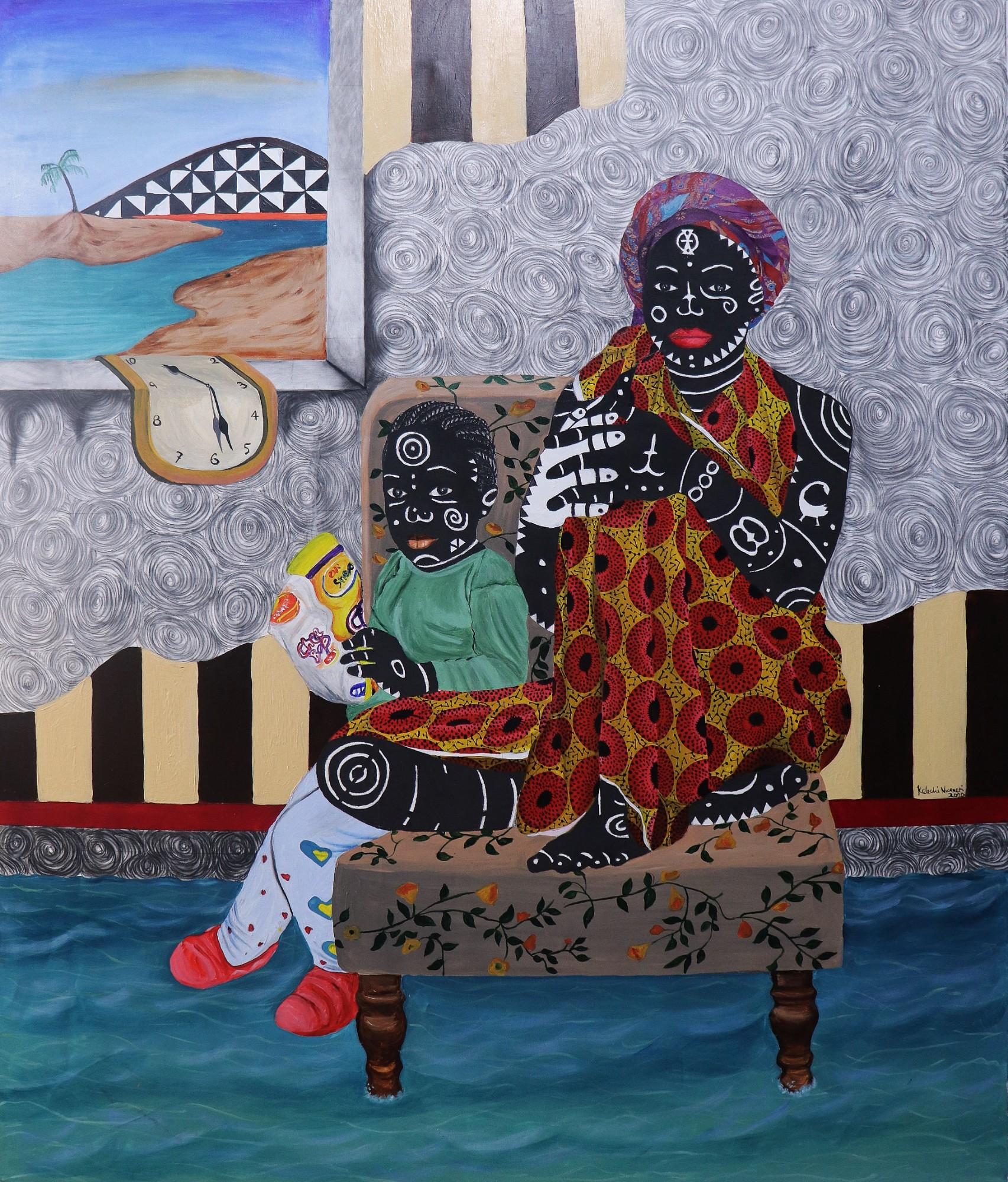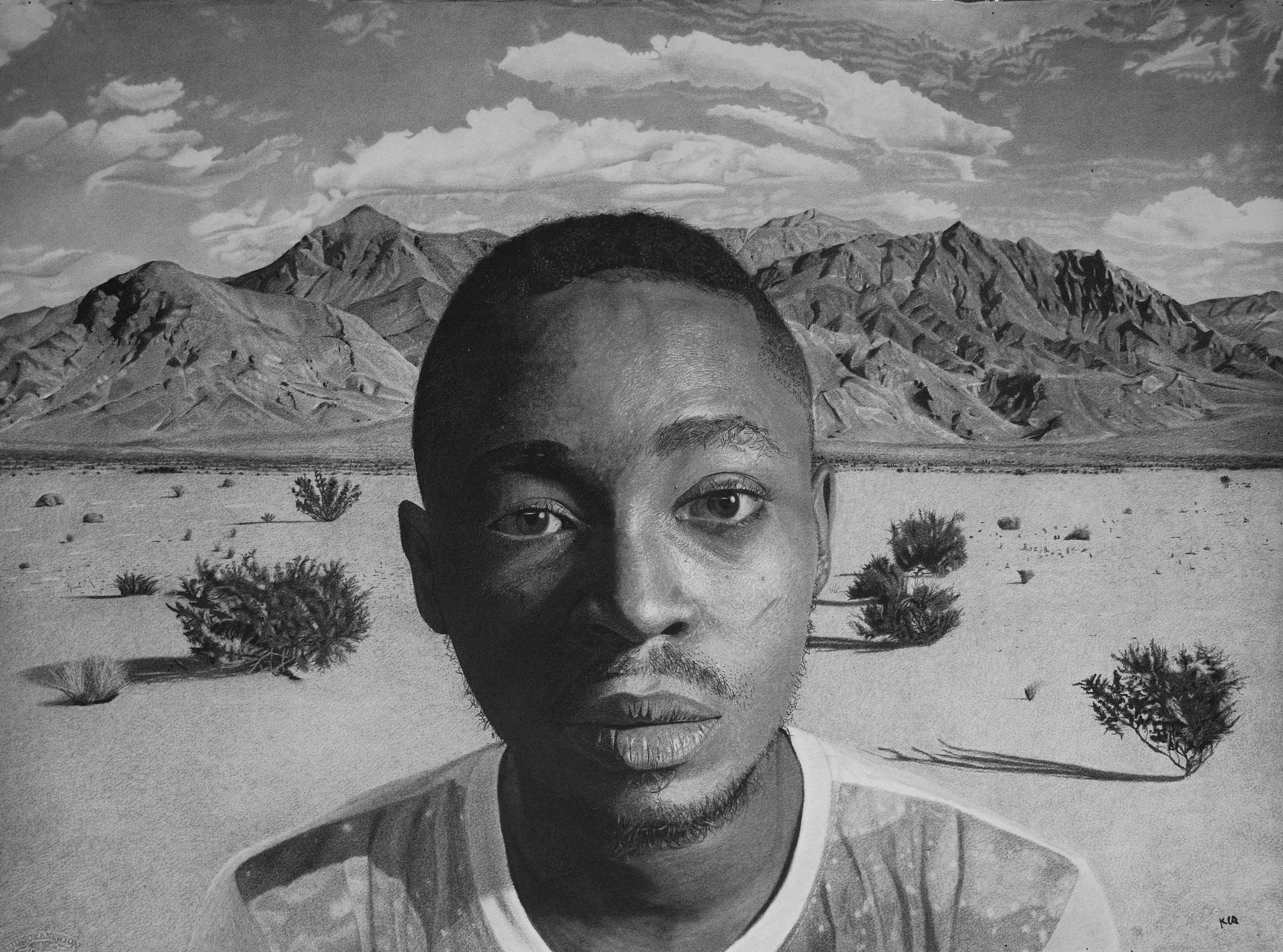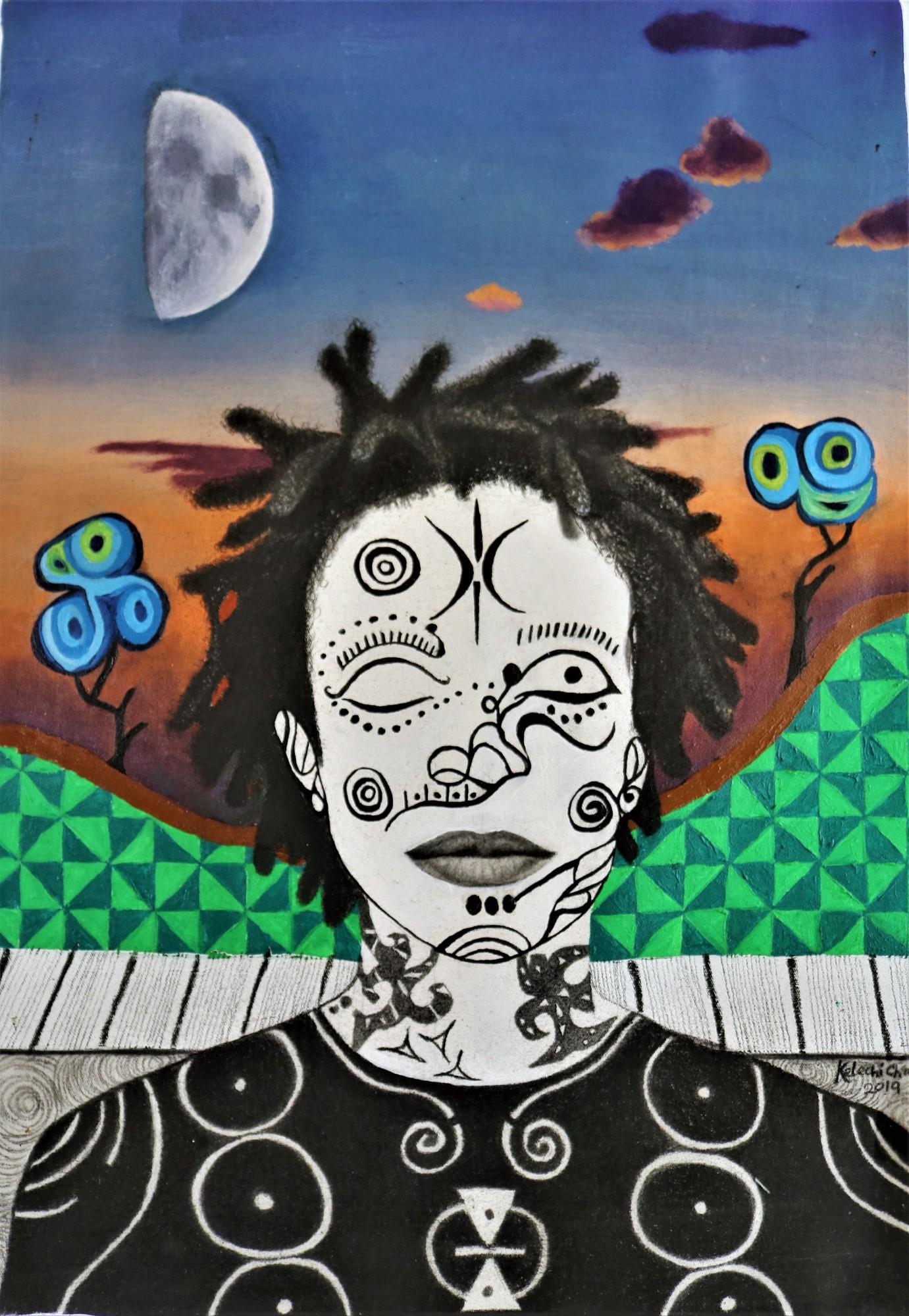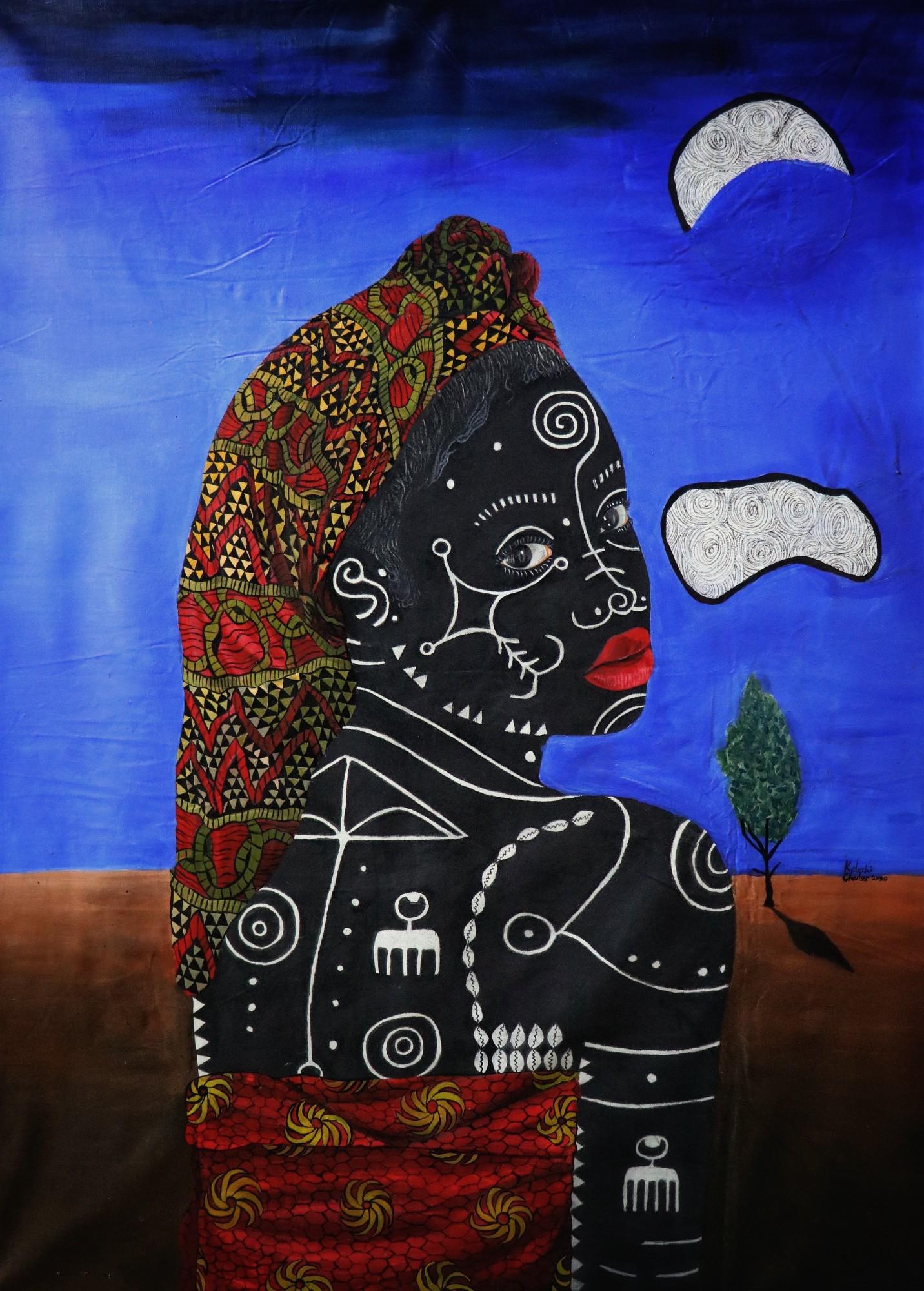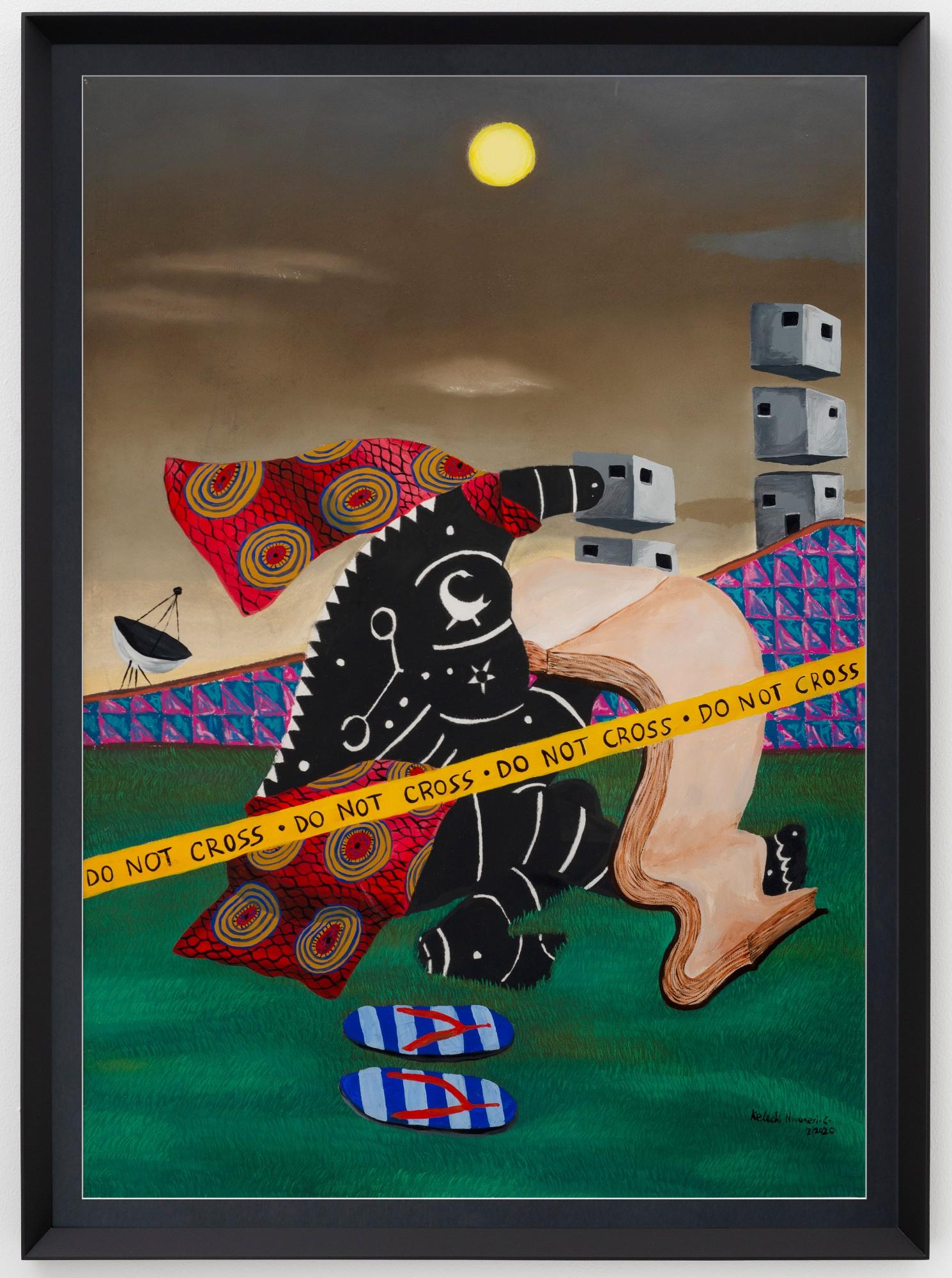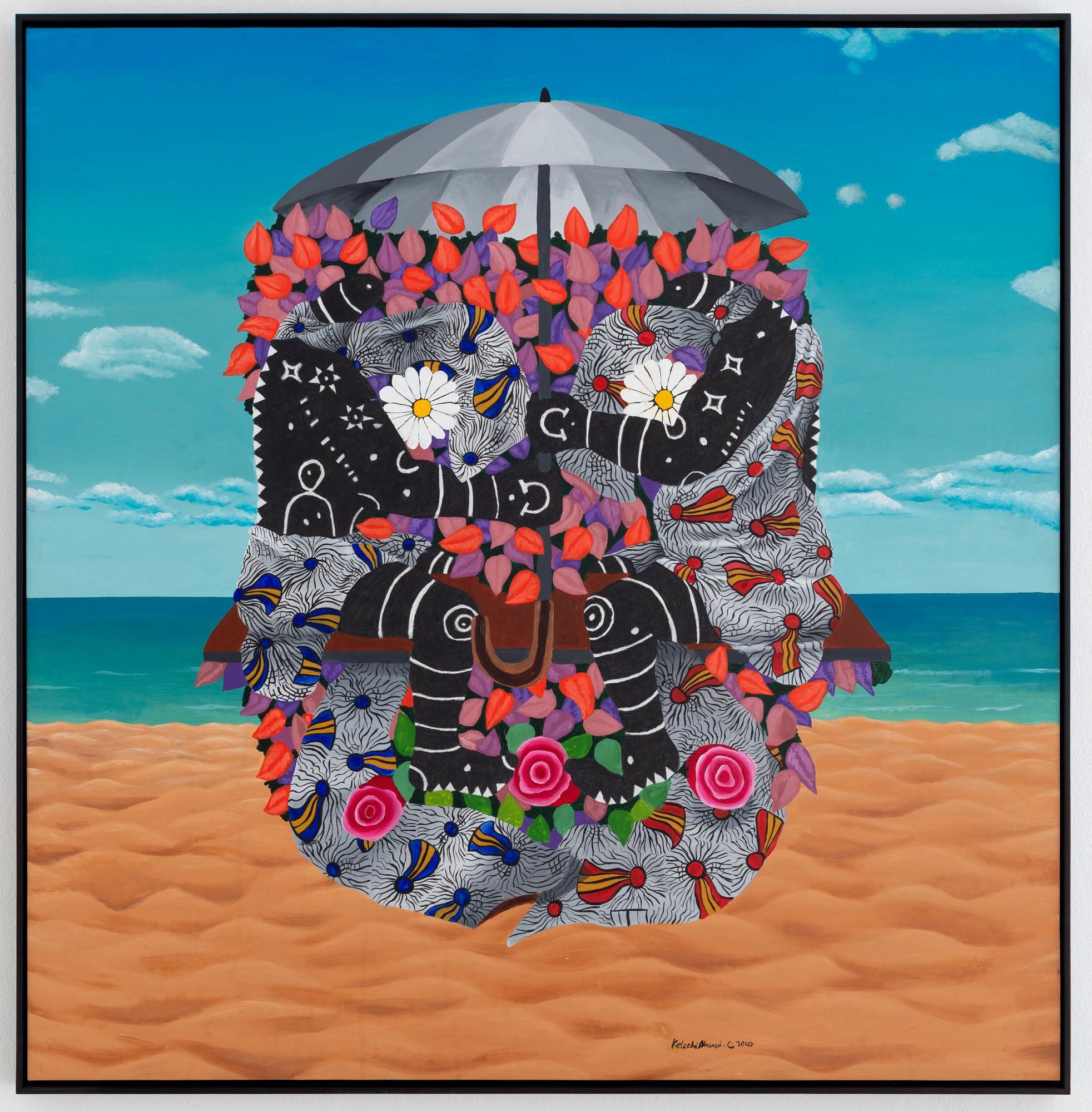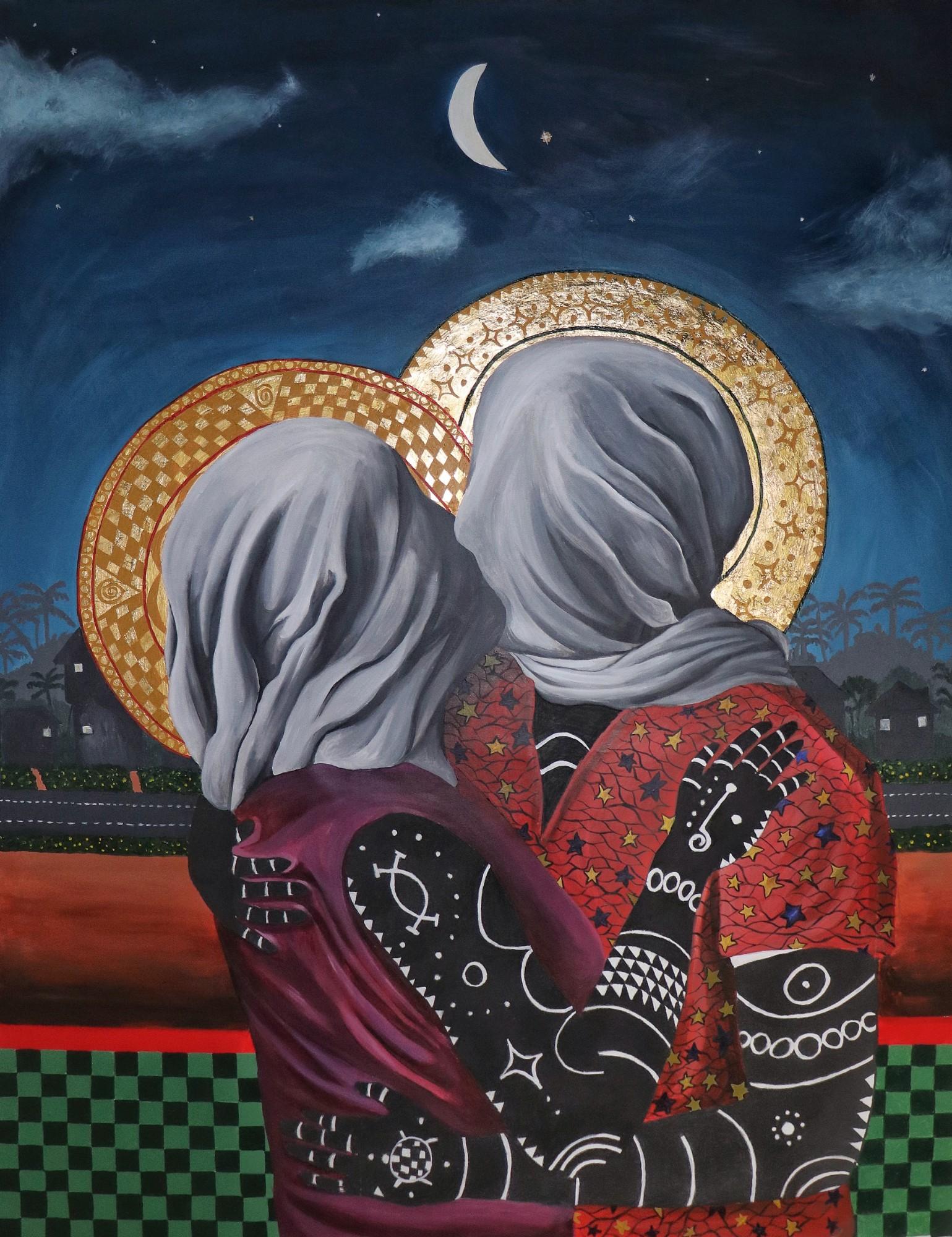Working in an inventive, personal style that he boldly calls contemporary surrealism, Nigerian artist Kelechi Nwaneri creates beautifully bizarre imagery of fictional figures in landscapes, which are half-real and half-imagined. Making use of indigenous West African iconography, which he marvelously mixes with psychological scenarios straight out of the history of European modern art, Nwaneri constructs colorful, new, dreamlike narratives that magically catch and hold viewers’ minds and eyes.
With his first solo show presently on view at the South African gallery Ebony/Curated, and future one-person exhibitions planned for Kristin Hjellegjerde Gallery in London and AKKA Project, which has galleries in Dubai and Venice, the twenty-six-year-old emerging painter is a rising star on the burgeoning contemporary African art scene, which is currently a hot topic in Europe and on the radar of collectors around the world. Wanting to learn more about his enchanting work and the ideas behind it, Art & Object spoke to the emerging artist at his studio in Italy, where he is an artist-in-residence in Venice for the next six weeks.
Paul Laster: When did you first become interested in art?
Kelechi Nwaneri: I’ve been drawing as long as I can remember. I started drawing cartoons, like The Lion King, when I was quite young. At one point in secondary school I even wanted to create a comic book, but life moved on and I forgot about it. Then I started to get more serious about making art around 2013, when I was in college.
PL: But you didn’t take art classes in college, right?
KN: No, I studied agricultural extension, but—to be honest—I still wasn’t sure what I wanted to do. In my third year I realized that I definitely wasn’t interested in agriculture, so I went back to the only thing that I knew how to do, drawing. I watched videos on the Internet to find out how to become an artist and discovered artists like Kelvin Okafor making hyper-realistic pencil portraits. I was really inspired. It had a negative effect on my grades in school, but I knew that was what I wanted to do. I was astonished at the possibility that a simple pencil could create so much detail in a drawing.




